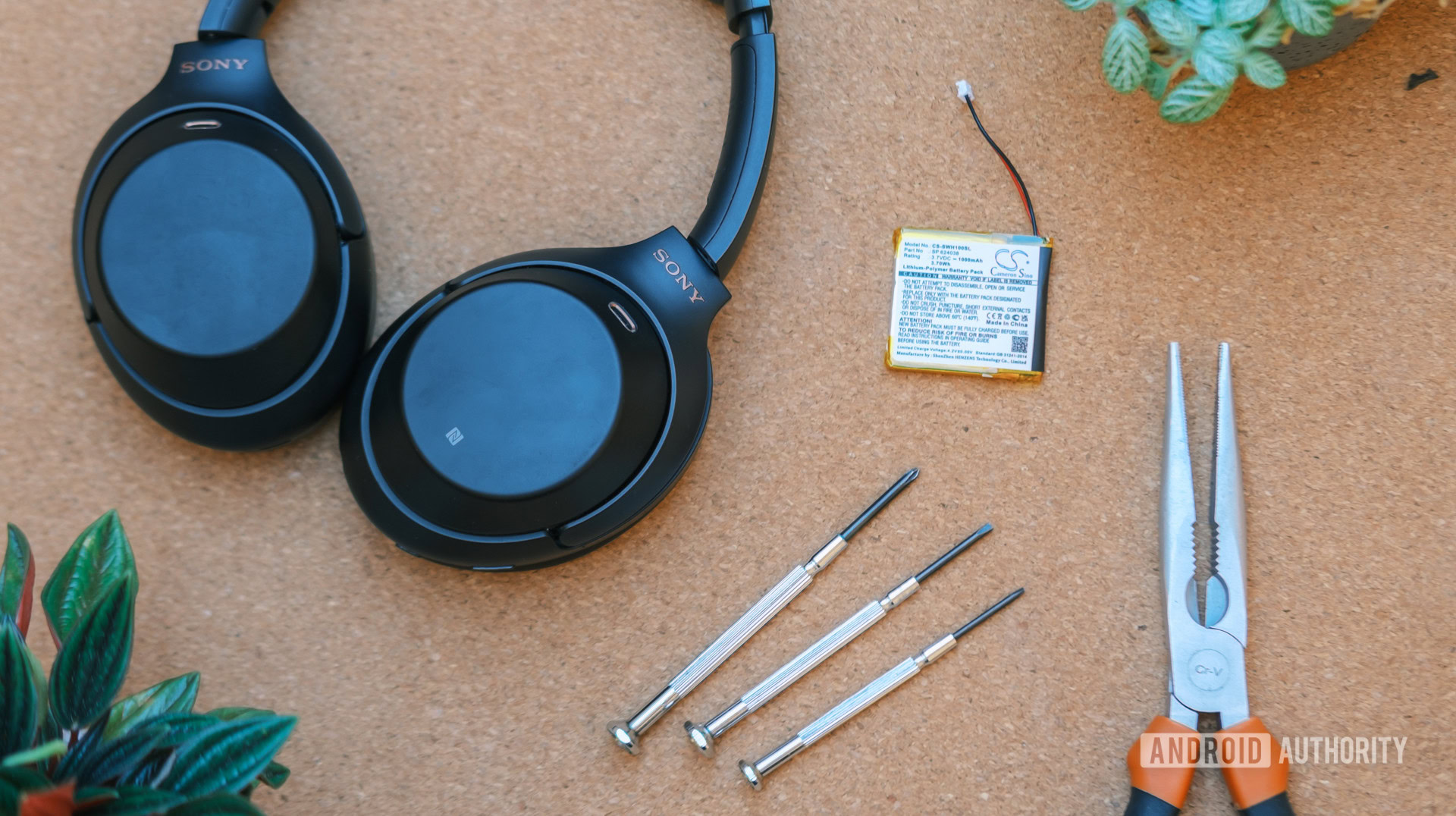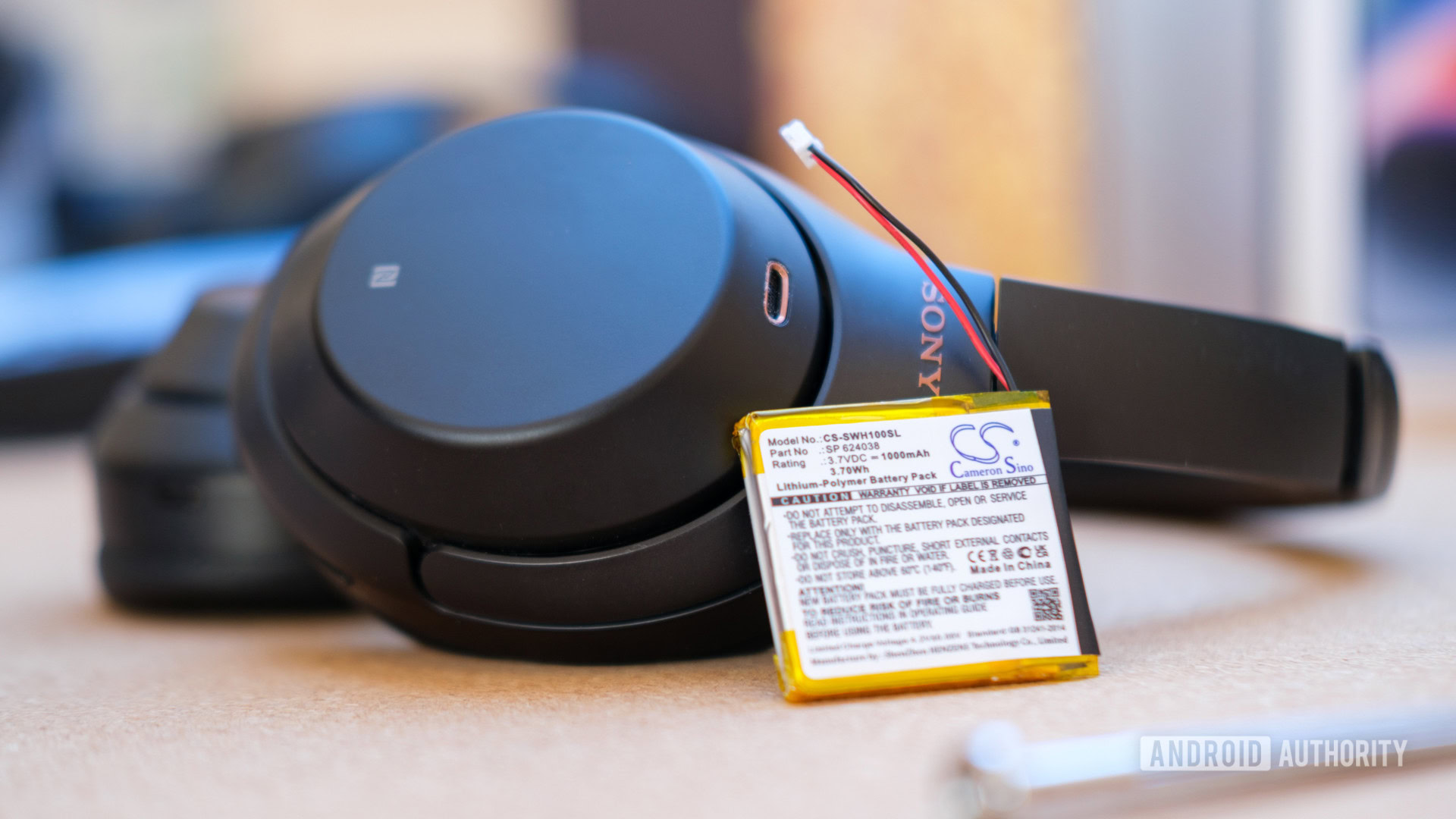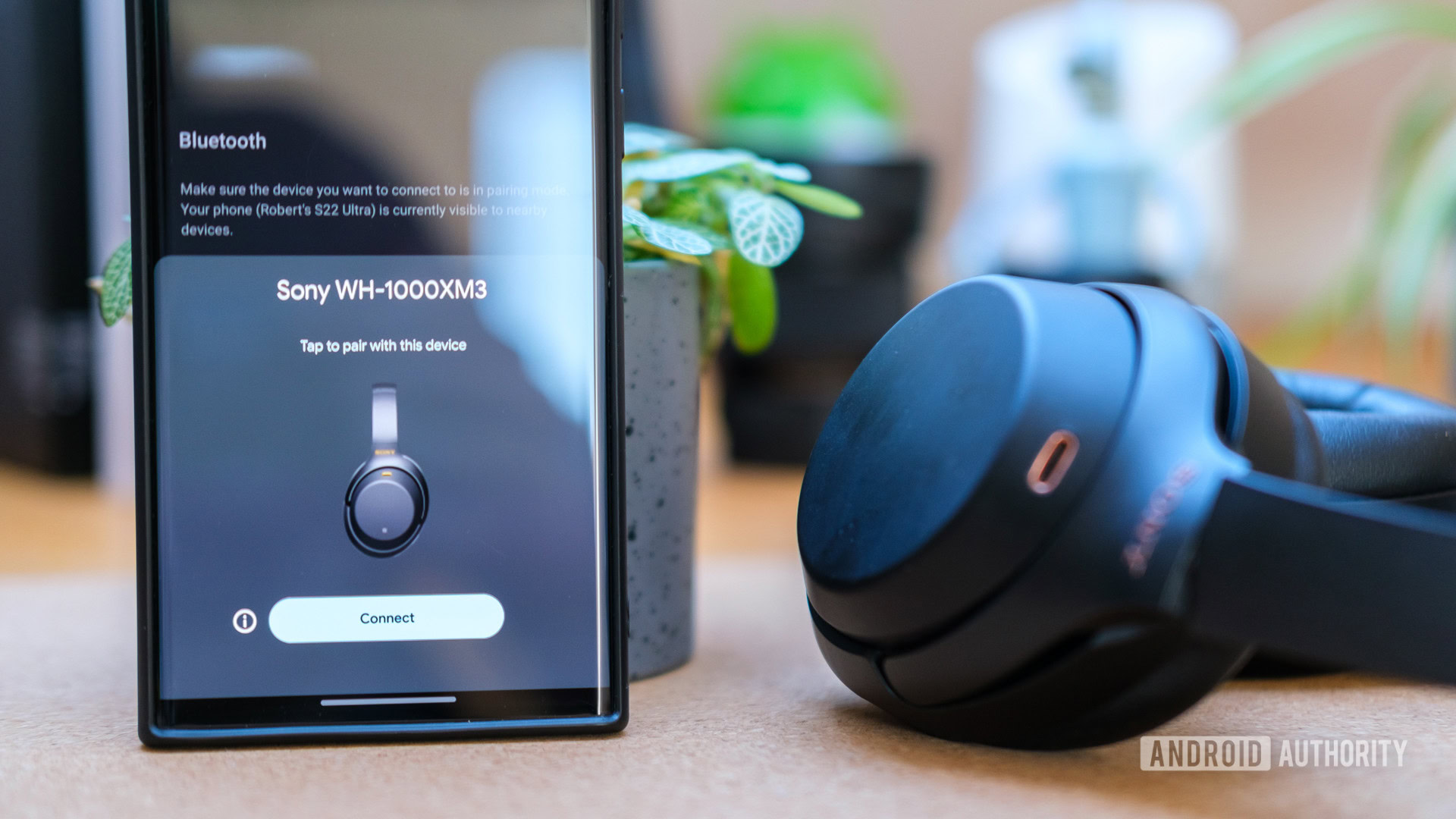Affiliate links on Android Authority may earn us a commission. Learn more.
Fixing my Sony WH-1000XM3 convinced me of the right to repair

I’m sure you’ve all been unfortunate enough to have a beloved piece of tech suddenly bite the dust. A few months back, my Sony WH-1000XM3 battery died after nearly three years of faithful service. Although the headphones still worked over 3.5mm, I lost all Bluetooth and ANC functionality. Without a warranty, I was facing the prospect of forking over nearly £200 for a replacement pair or upgrading to the £350 Sony WH-1000XM5. Neither is a particularly attractive prospect, especially given that the headphones were otherwise working.
Thankfully, I was able to replace the battery, leasing hopefully years more life out of these otherwise excellent Bluetooth headphones. And it only cost me £14 and less than an hour of my time. I’m not going to cover the steps to repair the unit here; I’ll direct you to the excellent iFixit guide I used, instead. But I do want to share some insight into the entire process of repairing a modern piece of technology.
Repairability is an afterthought

Lithium batteries eventually stop working; that’s just the nature of battery technology. Their capacity slowly reduces, voltages fall, and eventually, they can’t be charged. In fact, the battery is almost certainly the reason a number of your portable gadgets eventually end up in the trash. Batteries typically only last three years or so, and replacing them can often lead to many more years of use from an old gadget. Unfortunately, getting hold of official replacement parts is very difficult.
Sony doesn’t sell WH-1000XM3 battery replacements, and there’s no transparent pricing about out-of-warranty repairs from one of its trusted partners (guaranteed it’ll be outrageously expensive). Instead, I had to source a third-party alternative. Thankfully, there were plenty of batteries for sale on Amazon and eBay, but it requires a little bit of knowledge about battery voltages and capacities to double-check their suitability. Plus, they’re often more expensive than a battery really should be; you can buy general-purpose li-ion and li-poly batteries for less than $5 at electronics retailers.
This repair was only possible thanks to guides and parts from third parties.
Even after all my research, the replacement battery I settled on was a fraction larger than Sony’s already snugly fit original. See the image below — the original is on the left. It was a bit of a squeeze to fit it into the frame, and you should always be very careful about applying pressure to batteries. Before even getting into the nitty gritty of conducting the repair, the process would have been much easier if Sony, and other manufacturers, stocked essential replacements in a simple storefront.
Even if you can get hold of spare parts, replacing them is a whole other matter. While opening up the Sony WH-1000MX3 isn’t too difficult (it’s just a few clips and screws), you’ll still need a guide to show you where everything is, and once again, I had to turn to a third party. Even then, the headphones are constructed in such a way that it would be very easy to damage something else during the repair.
Look at all those wires! Trying to repair a gadget could easily break it further.
Note the short touch control ribbon cable in the earcup and the close proximity between the battery and some very delicate wires. A sharp tug or slip of the screwdriver is all it would take to render the headphones unrepairable. There’s an unholy amount of adhesive used to fix the WH-1000XM3 battery down too, which doesn’t pair well with thin delicate wires and batteries that explode when punctured or bent. I know my way around circuits and repairs pretty well, but this task could easily be too daunting for inexperienced DIYers.
Reading between the lines, Sony never built the WH-1000MH3 with repairability in mind, at least not outside of its official warranty channel. That’s no good to consumers more than a couple of years down the line who find themselves in need of a cheap, simple, and quick repair to keep their product working.
Replaceable batteries should be mandatory

Hearing the familiar “power on” phrase and successfully pairing my headphones with my smartphone felt like a major win, but I’ve realized it shouldn’t have felt like the big deal it turned out to be.
Replacing basic parts should be a familiar and simple part of long-term ownership. The money saved, while certainly welcome, is just half of the picture. Had I thrown these headphones in the garbage, the plastics and circuitry would have pointlessly clogged up the local landfill. Furthermore, I would have bought another pair, unnecessarily consuming more of those very same precious metals and other resources I’d have just discarded.
£14 saved me £350, resulting in sending fewer wasted materials to landfill.
Looking at the whole scenario, the problem with the disposable nature of most modern gadgets is glaringly obvious, whether it’s headphones or more complex tech like smartphones. A mere £14 and a little time was all it cost to take a broken product and make it virtually good as new. This isn’t the first time a battery replacement has saved me from chucking a gadget — I obtained years more use out of my LG G3 thanks to third-party batteries. The same logic applies to screens and other essential repairs, but replaceable batteries are virtually a no-brainer in terms of cost and simplicity.
Do you ever repair gadgets yourself?
While the argument for replaceable batteries is pretty clear, they’re not a silver bullet, particularly when it comes to water resistance, fast charging, and ultra-slim designs. There’s a cost factor too; the WH-1000XM3 battery Sony uses is clearly cheap and off-the-shelf rather than a bespoke replaceable package, for instance. But I’d quite happily sacrifice a few design aspects and even pay a little bit more upfront if manufacturers started building products to last and provide easier access to spare parts.
Although this argument is compelling from a consumer standpoint, there’s still little profit or even social incentive for companies to provide long-term repairability support. Being seen to launch something new is still more important than being sustainable (unless you’re Nokia, it seems). Innovation’s plateau, environmental concerns, and the sheer cost of the latest products have completely convinced me that the right-to-repair movement’s push for accessible components, tools, and user manuals is more important than ever.